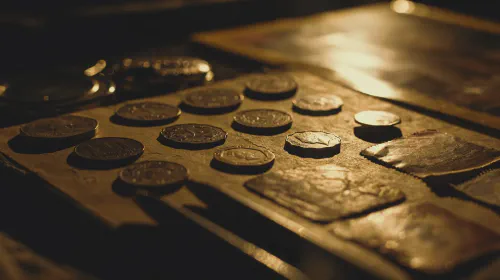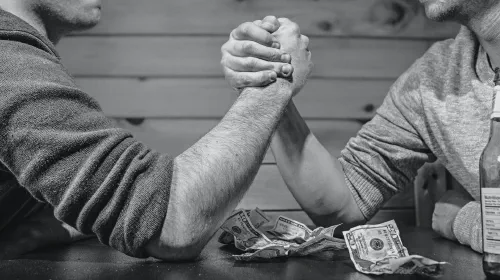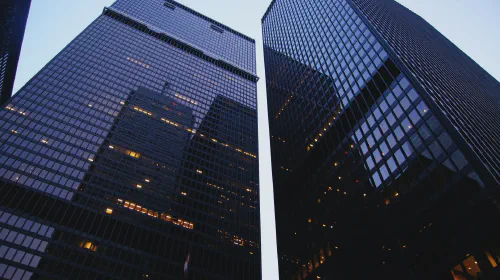XRP - How Many Are There and How Many Are Left?
Salomon Kisters
Aug 30, 2024This post may contain affiliate links. If you use these links to buy something we may earn a commission. Thanks!
The Enduring Legacy of XRP and the XRP Ledger in 2024
In the fast-paced world of cryptocurrency, XRP has emerged as a resilient digital asset. Created by Ripple, XRP operates on the XRP Ledger (XRPL), a public blockchain renowned for its speed and energy efficiency. This article delves into the XRPL, its development, and its interaction with Ripple and XRP.
The XRP Ledger: A Foundation for Efficient Payments
The XRP Ledger (XRPL), launched in 2012, is a decentralized, open-source blockchain. It was developed by Jed McCaleb, Arthur Britto, and David Schwartz with the goal of creating a platform that could facilitate fast, cost-effective global payments. Unlike other blockchains that aim to replace traditional financial systems, the XRPL is designed to work in conjunction with them, making it a practical choice for financial institutions.
Key Features:
- High Transaction Throughput: Capable of processing up to 1,500 transactions per second with settlement times of just 3-5 seconds.
- Eco-Friendly: The XRPL is energy-efficient, making it a sustainable option in the cryptocurrency space.
- Open-Source: The ledger’s open-source nature invites global developers to contribute to its growth and innovation.
A Journey Through Time: The History of the XRP Ledger
The XRP Ledger’s history dates back to 2011 when its founders sought to build a blockchain that improved upon Bitcoin’s limitations, particularly in transaction speed and energy consumption. The project officially launched in 2012, followed by the formation of Ripple Labs (formerly OpenCoin) to support its development.
Major Milestones:
- 2011: Conceptualization and early development.
- June 2012: Official launch of the XRP Ledger.
- September 2012: Ripple Labs founded to oversee and develop the XRPL.
- 2013: Rebranding from OpenCoin to Ripple Labs.
What is XRP? A Cryptocurrency with a Purpose
XRP is designed to address inefficiencies in global payments, particularly in terms of speed and cost. It is often compared to Bitcoin, but XRP offers distinct advantages in several areas.
Key Comparisons:

- Speed: XRP transactions settle in 3-5 seconds, compared to Bitcoin’s 10 minutes or more.
- Cost: XRP’s transaction fee is just $0.0002, while Bitcoin’s average fee hovers around $0.50.
- Scalability: XRP can handle up to 1,500 transactions per second, vastly outpacing Bitcoin’s 3 transactions per second.
How Many XRPs Are Out There?
XRP is a deflationary token with a total supply capped at 100 billion, ensuring its value is protected over time. Ripple Labs initially placed 55 billion XRP in an escrow account to control its release into the market. This mechanism helps prevent an oversupply that could dilute XRP’s value.
As of August 2024, the distribution of XRP is as follows:

- Total XRP held by Ripple: 5.6 billion
- Total XRP distributed: 48.7 billion
- Total XRP held in Escrow: 45.7 billion
Ripple and CBDCs: The Future of Digital Currencies
Ripple is actively positioning XRP Ledger technology to serve as the backbone for Central Bank Digital Currencies (CBDCs). By leveraging XRPL’s features—such as security, speed, and scalability—Ripple provides an efficient framework for central banks to issue, manage, and distribute CBDCs.
The SEC Lawsuit: A Landmark Battle for XRP
In 2020, the U.S. Securities and Exchange Commission (SEC) filed a lawsuit against Ripple, claiming that XRP was an unregistered security. This legal battle had significant implications for the future of XRP, causing major exchanges to delist the token and resulting in a drop in its value.
However, Ripple achieved a partial victory in July 2023, with the court ruling that programmatic sales of XRP did not constitute securities transactions. This decision was a crucial win for Ripple, allowing XRP to regain its standing in the market.
The Future of Ripple and XRP
Ripple’s future looks promising as it continues to innovate and expand its reach in the global financial system. With advancements like the Ripple USD Stablecoin expected to launch in late 2024 and increasing adoption of its technology by financial institutions, Ripple is well-positioned to remain a key player in the cryptocurrency world.
Stay informed with the latest insights in Crypto, Blockchain, and Cyber-Security! Subscribe to our newsletter now to receive exclusive updates, expert analyses, and current developments directly to your inbox. Don't miss the opportunity to expand your knowledge and stay up-to-date.
Love what you're reading? Subscribe for top stories in Crypto, Blockchain, and Cyber-Security. Stay informed with exclusive updates.
Please note that the Content may have been generated with the Help of AI. The editorial content of OriginStamp AG does not constitute a recommendation for investment or purchase advice. In principle, an investment can also lead to a total loss. Therefore, please seek advice before making an investment decision.

How Many Solana Coins Are There and How Many Are Left?
Solana is a new player in the blockchain market. But how many Solana Coins are there, and how many are left?

Polkadot vs. Solana: A Comprehensive Comparison of Strengths and Weaknesses
Learn about the strengths and weaknesses of Polkadot and Solana, two major players in the blockchain industry, to decide which is better suited for your needs.

Top Enterprise Blockchain Platforms
There are several types of enterprise blockchain platforms available to meet the needs of large corporations. Let's have a look at the top enterprise blockchain platforms.
Protect your documents
Your gateway to unforgeable data. Imprint the authenticity of your information with our blockchain timestamp